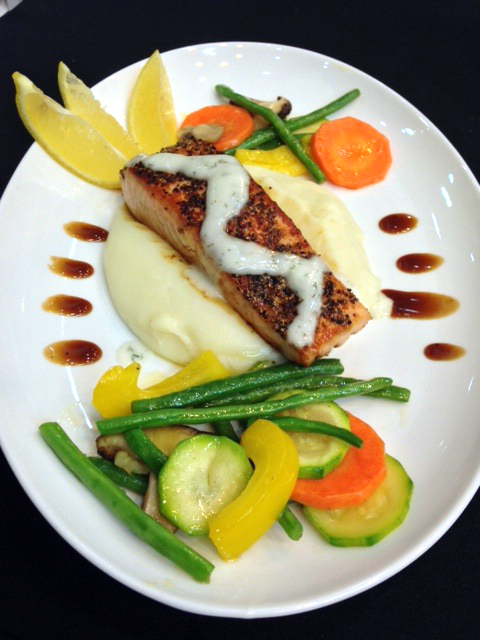Filtered by: Lifestyle
Lifestyle
A peek at food plating trends in 2014
Text and Photos by NIKKA SARTHOU

Our group's plated seared salmon dish.
I had the chance to feel like a chef for a day at the Unilever Food Solutions (UFS) kitchen. For one night, the kitchen became fit for an episode of MasterChef; there was a market area where we could shop for ingredients and each group had a working station with complete cooking tools and equipment and everything.
Each group had to create a seared salmon dish with a siding of mashed potatoes and vegetables. Part of the cooking challenge was plating the dish. Our group decided to put the seared salmon on top of a bed of mashed potatoes. We plated it with assorted buttered vegetables on each side, garnished it with lemon wedges, and drizzled some creamy dill sauce on top.
Once all dishes were plated, the UFS chefs judged for the one with the best plating and another for the best tasting dish. Our group was actually awarded the best plate.
Discovering the five key plating trends this 2014
When a dish looks good, I can actually feel my appetite increasing. I found it interesting when one of the chefs from Unilever Food Solutions demonstrated the different styles of plating and divulged the trends for food plating.

Here's a fine example of plating.
He showed us how to do the classical plating technique of using three basic food items—main, starch, and vegetables—and arrange it by thinking of the round plate as the face of the clock. You should put the main ingredient between 3 to 9 o’clock (safest bet is 6 o’clock), the starch between 9 to 11 o’clock, and the veggies between 11 to 3 o’clock. Then you serve the plate with the main ingredient facing the diner.
The chef also explained the other key plating trends, such as:
- The landscape technique, where you can take inspiration from garden landscapes;
- Free-form plating, which somehow mimics modern art;
- Using organic materials to have a more natural and rustic feel;
- Futuristic plating techniques that make use of materials like metal and glass;
- And non-traditional and alternative receptacles to create one-of-a-kind plate settings and table arrangements.

Doesn't that look appetizing?
The Chefmanship Academy section in the UFS website has modules available for people in the food service industry. Whether you’re a restaurateur, a chef or part of the kitchen staff, you could browse through the modules about Menu Planning, Food Safety, Counting Costs, or Maximising Efficiency and Profits.
Learn about food plating and more about the food industry from the Unilever Food Solutions website. — VC, GMA News
Tags: foodplatingtrends
More Videos
Most Popular




